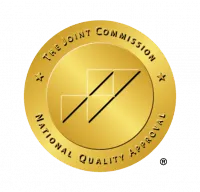Alcohol and Cancer
In 2020, 60 percent of Americans surveyed reported increased alcohol consumption due to COVID-19-related stress, increased alcohol availability, and boredom. This has had alarming consequences, including an increase in alcohol addiction and a massive spike in liver disease.
But these are far from the only consequences. While we often associate smoking with increased cancer risk, it turns out alcohol also plays a big role. In fact, according to a recent study in Lancet Oncology, alcohol consumption led to 741,000 new cancer diagnoses globally in 2020—equal to four percent of all cancer cases worldwide.
Below, we’ll discuss the link between alcohol and cancer, including some of the most common types of cancer caused by alcohol, and how you can lower your risk.
Learn more about other common diseases linked to alcohol
Does Alcohol Increase Cancer Risk?
While research is ongoing, it’s already clear that alcohol use contributes to several types of cancer, including cancers of the head and neck, esophagus, colon, rectum, liver, and breast. Others that show a potential connection include pancreatic, prostate, skin, and stomach cancers.
In the recent Lancet Oncology study, heavy or risky drinking (two drinks or more per day) accounted for 85 percent of new alcohol-related cancer diagnoses. But moderate drinking (up to two drinks per day) still contributed to one in seven cases.
Men accounted for three-quarters of these diagnoses. But with alcohol consumption on the rise among women, it’s likely that this gap will narrow over the next few decades.
How Does Alcohol Use Increase Cancer Risk?
Acetaldehyde
There are several reasons alcohol increases the risk of cancer, but among the biggest is a chemical called acetaldehyde. This substance is a known carcinogen, and is produced when alcohol is metabolized in the body.
The amount of acetaldehyde in your system varies with the amount of alcohol you drink and how quickly your body can process it. Acetaldehyde is an in-between step in the elimination of alcohol from your system. This chemical is later processed into acetate, and then to harmless carbon dioxide and water.
Since the average person can only process around one drink per hour, acetaldehyde can quickly accumulate when you binge drink, and is one reason why people get hangovers. If you drink steadily most days, you likely have some amount of this toxin in your system most of the time. This is one reason why greater alcohol consumption is tied to greater cancer risk.
Free Radicals
When alcohol is broken down into acetaldehyde, free radicals called reactive oxygen species are produced. Free radicals bind to and damage DNA and proteins. They can also interact with other molecules to form cancer-causing compounds.
Higher Estrogen Levels
Alcohol ingestion increases estrogen levels in both men and women over time. Alcohol also decreases testosterone levels. Evidence shows that higher estrogen increases the risk for breast cancer in genetically susceptible people, and can also make the liver more prone to inflammation and damage.
Read More: How Alcohol Affects Women’s Hormones
Decreased Absorption of Key Vitamins
Alcohol reduces folate absorption, a vitamin that is required for DNA repair. Besides folate, alcohol can decrease the absorption of vitamins A, C, D, E, and carotenoids. Lower absorption of each of these may impact cancer risk.
Which Types of Cancer Are Caused by Alcohol?
Alcohol is strongly linked to cancers of the oral cavity, pharynx, larynx, esophagus, colon, rectum, liver, and female breast, according to the International Agency for Research on Cancer (IARC), a branch of the World Health Organization. Other types of cancer which may be influenced by alcohol include pancreatic, skin, stomach, and prostate cancers.
Alcohol and Head and Neck Cancers
In 2018, head and neck cancers were the sixth most common cancer worldwide, accounting for 890,000 cases and 450,000 deaths. About 27 percent of all mouth, pharynx, and larynx cancers, and 34 percent of esophageal cancers can be attributed to alcohol use.
Alcohol and Oral Cancer
Oral cancers are cancers of the mouth and throat. They are more common in men over age 40. Fifty-three thousand new cases are reported each year. Alcohol use, smoking, and human papillomavirus (HPV) infections are all risk factors.
Smoking and drinking is an especially dangerous combination. Alcohol irritates the lining of the mouth, throat, and esophagus, making it easier for tobacco carcinogens to enter your cells. People who both smoke and drink are 35 times more likely to get oral cancer than those who abstain.
Alcohol and Pharyngeal Cancer
The pharynx is a hollow tube connecting the nasal cavity with the top of the windpipe and esophagus. It is divided into three sections:
- the nasopharynx (behind the nose)
- the oropharynx (throat)
- the hypopharynx (connects the throat to the windpipe)
Exposure to acetaldehyde from alcohol consumption increases the risk of cancer in all parts of the pharynx.
Alcohol and Laryngeal Cancer
The larynx is the section of the throat that contains the voice box. Although tobacco is a major risk factor for laryngeal cancer, alcohol increases the risk even more.
Read More: The Link Between Smoking and Drinking
Alcohol and Esophageal Cancer
The esophagus connects the throat to the stomach. Some alcohol is metabolized into acetaldehyde in the mouth, and this substance can irritate the esophageal lining, increasing cancer risk. When combined with tobacco use, the risk increases exponentially, as alcohol makes the cell membrane more permeable to carcinogens.
Alcohol and Liver Cancer
Since alcohol is metabolized in the liver, this organ is especially vulnerable to damage from excessive drinking. Concentrations of acetaldehyde and free radicals can damage liver cells and lead to conditions like alcoholic hepatitis and cirrhosis (scarring of the liver). Cirrhosis is a major risk factor for liver cancer, and can be life-threatening on its own.Alcohol use and obesity synergistically increase the risk of liver cancer. If you are drinking heavily and also eating a diet high in sugar or fat, you should pay extra careful attention to the health of your liver.
Alcohol and Breast Cancer
Alcohol increases estrogen, elevating the risk for breast cancer in genetically susceptible premenopausal and postmenopausal women. Alcohol exposure before a first pregnancy may also cause changes in the breast tissue that predispose it to breast cancer development.
Alcohol and Breast Cancer Statistics:
- According to the International Agency for Research on Cancer, adding an additional drink to your diet every day increases breast cancer risk by 7 to 10 percent.
- Even light alcohol consumption increases breast cancer risk by 4 to 15 percent.
- In the US, alcohol causes 4 to 10 percent of female breast cancer or 9,000 to 23,000 new cases of invasive breast cancer each year.
Read More: Alcohol and Breast Cancer
Alcohol and Colorectal Cancer
Fecal bacteria in the colon and rectum produce acetaldehyde. After alcohol consumption, acetaldehyde concentrations in the colon can be up to 100 times higher than in the blood.
Acetaldehyde breaks down folic acid, a vitamin that protects DNA, and promotes cell overgrowth. Rapid cell growth in the colon can lead to cancer in genetically predisposed people.
Other Cancers That May Be Linked to Alcohol Use
Alcohol and Pancreatic Cancer
Pancreatic cancer is the world’s deadliest cancer, with a nine percent five-year survival rate. Alcohol consumption is the fourth most important risk factor for developing pancreatic cancer.
Tobacco use, alcohol consumption, excess body weight, and diabetes act synergistically to increase the risk of pancreatic cancer. This risk can be decreased by 27 percent or more through healthier lifestyle practices, however.
Alcohol and Prostate Cancer
A 2015 analysis of 572 studies found that heavy drinkers had a higher risk of prostate cancer compared to nondrinkers. However, since a 2019 study showed contradictory results, more research is needed.
Alcohol and Skin Cancer
The evidence linking alcohol use to melanoma is somewhat ambiguous. However, one study showed an increased risk, especially for melanomas in areas of the body not exposed to ultraviolet light.
Alcohol and Stomach Cancer
Certain kinds of bacteria can metabolize alcohol into acetaldehyde, increasing cancer risk. In most people, the acidity of the stomach keeps it bacteria-free. But those with gastritis who do not produce enough stomach acid can end up with harmful levels of bacteria, increasing acetaldehyde levels in the stomach 6.5-fold if they drink. This increases the risk of stomach cancer.
How Much Does Drinking Alcohol Increase My Cancer Risk?
Your risk for alcohol-related cancer depends on the type of cancer, and how much you drink. Research is ongoing, but the below table shows the risk factors for seven common types of cancer caused by alcohol (according to 2018 data from the Journal of Clinical Oncology).
| Type of Cancer | Light Drinker
Under 12.5 grams of alcohol per day (Less than 1 drink daily) | Moderate Drinker
Under 50 grams of alcohol per day (1 to 3 drinks daily) | Heavy Drinker
Over 50 grams of alcohol per day (4 or more drinks daily) |
|---|---|---|---|
| Oral (mouth) cancer | 1.1 fold higher risk | 1.8-fold higher risk | 5-fold higher risk |
| Pharyngeal (throat)cancer | 1.1-fold higher risk | 1.8-fold higher risk | 5-fold higher risk |
| Laryngeal (voicebox) cancer | 0.87-fold higher risk | 1.4-fold higher risk | 2.6-fold higher risk |
| Esophageal (food tube) cancer | 1.3-fold higher risk | 2.2-fold higher risk | 5-fold higher risk |
| Liver cancer | 1-fold higher risk | 1-fold higher risk | 2-fold higher risk |
| Breast cancer | 1-fold higher risk | 1.2-fold higher risk | 1.6-fold higher risk |
| Colorectal cancer | 1-fold higher risk | 1.4-fold higher risk | 1.4-fold higher risk |
Preventing Alcohol-Related Cancer
When it comes to preventing cancers caused by alcohol, the safest bet is abstinence. As with tobacco and processed meats, there is no risk-free level of alcohol intake.
Once you stop drinking, the risk for alcohol-related cancers decreases over time, but it may take over 20 years to return to the level of a nondrinker. One study on laryngeal and throat cancer found a 2 percent annual decline in risk, meaning it would take over 35 years to reach the risk level of nondrinkers.
That said, there are some things you can do in your daily life to reduce the impact of alcohol on your body. For example, some metabolism of alcohol into harmful acetaldehyde occurs in the mouth due to oral microbes. Good dental hygiene can reduce the number of oral microbes and thus acetaldehyde levels.
Exercise may also mitigate some of the harmful effects of alcohol. A 2020 study suggests that engaging in physical activity may decrease the mortality associated with alcohol-induced cancers.
Finally, there are several factors that multiply alcohol-related cancer risk, including smoking, poor diet, and obesity. Reducing any or all of these can lower your risk of cancers linked to alcohol.
Support For Drinking Less Alcohol
If you’re having trouble reducing how much you drink, there are new solutions for cutting back or quitting alcohol. Ria Health offers support for excessive alcohol use from an app on your smartphone. Get access to medications, coaching, expert medical support, and more, all from the comfort of home.
Learn more about how it works, or get started today.
Will insurance cover treatment? Verify Coverage
Have Questions? Call (800) 504-5360



